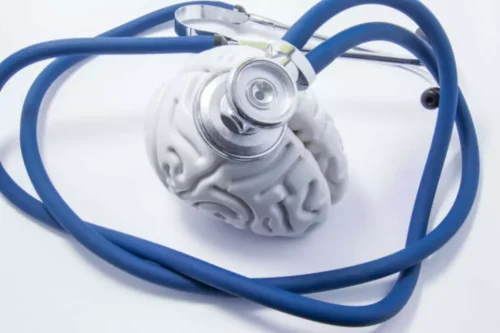
AWS includes varying degrees of autonomic hyperactivity symptoms and may progress to life-threatening conditions such as seizures, coma, cardiac arrest, and even death [2,180]. Benzodiazepines are considered as the standard treatment for AWS, and other drugs, such as β-blocker or α2-agonists can be used as adjunctive therapy [180]. Regular physical exercise and nutritional assessments should be incorporated into the abstinence strategy [115]. Cirrhosis has historically been considered an irreversible outcome following severe and prolonged liver damage.
Alcoholic hepatitis
Doctors may also recommend weight loss and quitting smoking as excess weight and smoking have both demonstrated a role in worsening alcoholic liver disease. Alcoholic hepatitis usually progresses to cirrhosis if a person continues to drink alcohol. Hepatitis heals in a person who stops drinking alcohol, but any cirrhosis does not reverse. Drinking a large volume of alcohol can cause fatty acids to collect in the liver.
Living With Cirrhosis of the Liver
The results from one or more of these severity scoring systems are one of the things a doctor may look at when deciding the urgency of your need for a liver transplant. If the results suggest your condition is severe, they can be used to help prioritize an organ transplant for you. However,the amount of time without alcohol use must be at least 6 months before you can be considered a candidate for a liver transplant. A standard alcoholic drink contains about 14 grams (g) of pure alcohol. Research shows that in many cases, people with alcohol-related cirrhosis have a history of drinking between 30 to 50 g (about 2 to 3 drinks) and 100 g (7 drinks) daily or more.

Preventing relapses

Alcohol-related liver disease (ARLD) is caused by damage to the liver from years of excessive drinking. Years of alcohol abuse can cause the liver to become inflamed and swollen. The outlook for people with ALD depends on the severity of liver damage, the presence of risk factors and complications, and their ability to permanently stop drinking.
- This article explores the early signs and symptoms of alcoholic liver disease, its stages, causes, risk factors, treatments, and prevention.
- This study explored the protective effects of UA on alcohol-induced liver injury and further elucidated its mechanism of action.
- The recidivism rates are similar (17%) to patients transplanted for alcohol-related cirrhosis.
- Please stop consuming all alcohol if you have acute hepatitis or cirrhosis.
When a person drinks alcohol, the alcohol passes into stomach and intestines where it is absorbed into the bloodstream. In turn, the alcohol-containing blood is transported to the liver. In order to understand alcohol’s effect on the liver, it’s helpful to know the role of the liver in overall health.

However, treatment can prolong the life of someone with cirrhosis for many years, especially if the disease is in the earliest stage at diagnosis. In 2017, there were 5.2 million cases of cirrhosis and chronic liver disease. The condition caused 1.48 million deaths in 2019, an increase of around 8% compared to 2017. We know that this is tough for our patients and their loved ones and we want to do everything we can to make the process seamless for our patients. It’s helpful for us if we have as much information about your condition as possible–any prior medical therapies, any new symptoms or signs, any medications, herbal supplements or any other medical conditions that you may have. Collect all of this information and share it with your liver team.

Stages of Cirrhosis of the Liver
Treatment for ALD may involve lifestyle changes, medications, and, in severe cases, liver transplantation. Imaging studies of the abdomen such as an ultrasound, computed tomography (CT) scan, or magnetic resonance imaging (MRI), allow doctors to see the liver and check for abnormalities that may be indications of alcohol-related liver disease. An test called transient elastography, which uses an ultrasound or magnetic alcoholic liver disease resonance imaging, measures the stiffness of the liver, which can aid in diagnosing cirrhosis. If you have cirrhosis of the liver, quitting drinking is the most important thing you can do to increase your lifespan. Research suggests that a person with cirrhosis who quits drinking has a 72% chance of living for at least seven years after diagnosis, while someone who continues to drink has only a 44% chance.
Liver transplant
- Hard liquor has a higher alcohol content than beer or wine; however, it is false to think that beer or wine are safer alternatives.
- The ongoing metabolism of ethanol produces excessive ROS and depletes glutathione, diverting the reaction from the production of methionine and S-adenosylmethionine (SAM), which is the predominant methyl donor in DNA methylation [72,73].
- Sign up for free, and receive liver transplant and decompensated cirrhosis content, plus expertise on liver health.
- The results indicated that UA has a significant protective effect against alcohol-induced liver injury in mice.
You’re at risk of alcohol-related liver disease if you have more than 3 drinks a day for about 10 years. You’re at risk of cirrhosis if you have more than 6 drinks a day for about 10 years. Alcohol-related liver disease https://ecosoberhouse.com/ is liver damage caused by drinking too much alcohol for a long time. In cirrhosis, at right, scar tissue replaces healthy liver tissue. Alcoholic hepatitis is caused by damage to the liver from drinking alcohol.
